Did you know that 95% of toxins can be removed through sweat in just 20 minutes of sauna time? This fact shows why home saunas are becoming more popular. You can have this detoxifying experience right at home with a home sauna kits.
Home sauna kits make creating your own relaxation and health haven easy. These DIY kits come with pre-cut materials, like premium western red cedar. They can be customized to fit any space in your home.
Whether you’re skilled in building or new to it, these kits have everything you need. You’ll get T&G for the interior walls, a door, a heater, and two benches. The step-by-step instructions make it simple to build your sauna.
You can read more about building a home sauna with DIY sauna kits here.
Table of Contents
Key Takeaways
- Home sauna kits provide an easy way to build a personal sauna
- Kits include pre-cut materials and customizable options
- Western red cedar is a popular wood choice for sauna construction
- DIY sauna kits are suitable for both experienced and novice builders
- Sauna sessions can help eliminate up to 95% of toxins through sweat
Understanding the Benefits of Home Saunas
Home saunas bring many benefits, from better health to saving money. They are a great addition to your wellness routine.
Health and Wellness Advantages
Using a home sauna regularly can significantly improve your health. A Japanese study showed that 15 minutes a day in an infrared sauna for two weeks can lower blood pressure. Saunas also help your heart, improving function and rhythm.

Saunas are good for muscles, too. They increase human growth hormone levels by 140%, helping with recovery after exercise. They also help with mental health, reducing stress and improving mood.
Convenience and Privacy Factors
An in-home sauna kit is very convenient. You don’t need to go to the gym or spa. You can control everything, making sure it’s just right for you.
Long-term Cost Savings
A home sauna costs around $1,000 to $5,000 at first. But compared to spa visits, it saves money in the long run. The cost to run it is also low, adding $100 to $500 a year to your electricity bill.
| Sauna Size | Dimensions | Ideal For |
|---|---|---|
| 2-person | 4 x 4 feet | Singles or couples |
| 3-4 person | 6 x 5 feet | Small families |
| 5-6 person | 6 x 8 feet | Larger families or groups |
Considering these benefits, many are choosing home saunas. They offer health, convenience, and long-term value.
Types of Home Sauna Kits
Home sauna kits come in various styles to match your needs and space. Let’s look at the main types of your in-house sauna kit.
Dry Sauna Kits
Dry sauna kits use wood-burning stoves or electric heaters. They warm rocks to create intense heat. These kits are loved for their traditional look and profound sweating benefits. Based on size and features, prices vary from $3,995 to $7,109.
Infrared Sauna Kits
Infrared sauna kits use light to heat up, reaching deeper into the body. They’re energy-saving and fit well in smaller areas. The Sun Home Luminar Outdoor 2-Person Infrared Sauna, priced at $6,950, is a top pick for 2024.
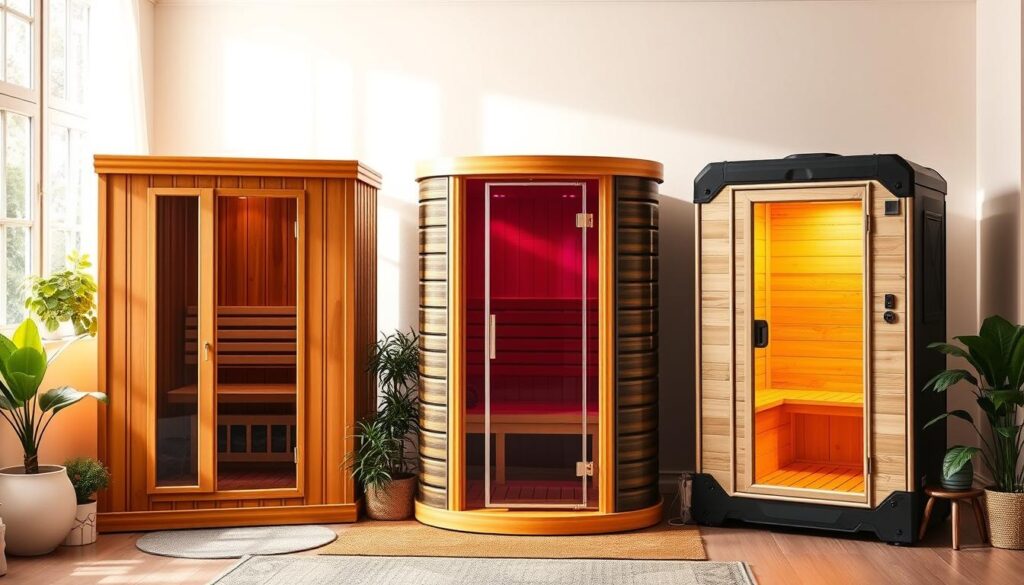
Steam Sauna Kits
Steam sauna kits mix heat and water to create a humid space. They’re excellent for breathing and skin health. The Redwood Outdoors Thermowood Cabin Outdoor Sauna, priced at $8,300, works as a dry and steam sauna.
| Sauna Type | Average Price Range | Key Feature |
|---|---|---|
| Dry Sauna | $3,995 – $7,109 | Traditional heat experience |
| Infrared Sauna | $5,295 – $6,950 | Deep tissue penetration |
| Steam Sauna | $6,750 – $8,300 | High humidity environment |
Consider your space, budget, and health goals when picking a home sauna kit. Each type has benefits, helping you find the best fit for your wellness path.
Choosing the Right Location for Your Sauna
When planning your home sauna, picking the right spot is critical. Whether you choose a DIY sauna kit or a pre-built one, where you place, it matters a lot. It affects your sauna experience and how easy it is to set it up.
Indoor vs. Outdoor Considerations
Indoor saunas are handy and private. They often go in basements, garages, or attics. On the other hand, outdoor saunas offer a natural vibe and more room. SaunaFin, a top sauna company in North America, says outdoor saunas can fit 3-4 people or more.
Space Requirements and Limitations
A typical home sauna needs about 4×4 feet of space with a 7-foot ceiling. Attics are often a great choice because they have room and privacy. When picking a spot, consider the sauna’s size and how much space you have.
Proximity to Power Sources and Plumbing
Having electricity and plumbing nearby is crucial for your home sauna. Electric heaters need a 220V power source. Putting your sauna near existing utilities makes installation easier and cheaper.
| Location | Advantages | Considerations |
|---|---|---|
| Basement | Privacy, existing utilities | Moisture control |
| Garage | Ample space, easy ventilation | Insulation needs |
| Backyard | Natural setting, larger size | Weather protection |
| Attic | Privacy, unused space | Structural support |
Good planning makes your home sauna a great addition to your life and home value. When picking the best spot for your DIY sauna kit, think about your space, budget, and lifestyle.
Essential Components of Home Sauna Kits
Building your sauna with a home sauna kit is exciting. These kits have everything you need for a cozy home spa. Let’s look at the main parts of a typical in-home sauna kit.
A standard kit includes tongue-and-groove (T&G) panels for the walls. These panels, often made from Western Red Cedar or White Aspen, look great and last a long time. The kit also has a special sauna door for keeping heat in.
The sauna’s heart is its heater. Most kits have electric heaters that warm the space in about 30 minutes. Infrared sauna kits are also available. At lower temperatures, they heat up faster in just 15-20 minutes.
Comfortable seating is vital for a good sauna experience. Kits usually have pre-cut benches that are easy to put together. Other important parts are:
- Insulation and vapor barriers for heat efficiency
- Flooring materials
- Ventilation components
- Lighting fixtures
Many kits allow customization. You can pick the size, wood type, and extra features you like. Some popular extras include thermometers, timers, and steam water buckets.
| Component | Function | Material Options |
|---|---|---|
| Interior Panels | Wall construction | Cedar, Aspen, Hemlock |
| Sauna Door | Heat retention | Wood with tempered glass |
| Heater | Temperature control | Electric, Infrared |
| Benches | Seating | Cedar, Aspen |
| Accessories | Enhance experience | Various |
Selecting the Ideal Wood for Your Sauna
Choosing the correct wood is critical when building a home sauna or picking an in-house sauna kit. The wood affects the sauna’s durability, look, and overall feel.
Cedar: The Popular Choice
Cedar is the favorite among sauna lovers. It naturally fights off decay and insects, ideal for the sauna’s hot, humid space. Cedar saunas have a warm, traditional vibe and need little care. Their lovely scent also boosts your sauna experience.
Alternative Wood Options
While cedar is a hit, other woods bring their perks to your home sauna:
- Hemlock: Known for its light color and straight grain, it gives a modern feel.
- Redwood: Like cedar, it fights mold and decay but might lose color over time.
- Aspen: It’s bright, non-toxic, and keeps moisture out.
- Pine: A budget-friendly choice that might need heat treatment for better stability.
Importance of Heat and Moisture Resistance
The best wood for your sauna should handle high heat and moisture well. Cedar is excellent at resisting heat, making it perfect for hot temperatures. Hemlock stays stable even with changing temperatures and humidity. Consider these points when picking wood for your sauna to ensure it lasts and works well.
Home Sauna Kits: Pre-built vs. DIY Options
Depending on your needs and skills, you can choose between pre-built and DIY home sauna kits. Pre-built kits offer quick installation, while DIY options allow for customization. Let’s explore both to help you decide which fits your sauna dreams.
Pre-built home sauna kits are ready-to-install units. They’re perfect for those wanting a hassle-free setup. These kits include all parts and can be assembled in hours. They’re great for indoor or outdoor use and offer portability.
DIY sauna kits give you more control over your sauna’s design. They’re ideal for integrating into existing spaces. While they require more work, they offer flexibility in size and shape. DIY kits typically cost less, starting around $3500 for indoor options.
| Feature | Pre-built Kit | DIY Kit |
|---|---|---|
| Installation Time | Few hours | Several days |
| Customization | Limited | High |
| Portability | Yes | No |
| Starting Cost | $4000+ | $3500+ |
Both options include essential components like wall panels, benches, and heaters. Your choice depends on factors like budget, space, and personal preferences. Remember, DIY kits need extra work but offer more design freedom.
“The decision between pre-built and DIY sauna kits often rests on personal preferences and lifestyle considerations.”
Whether you choose a pre-built or DIY sauna kit, you’re on your way to enjoying the benefits of a home sauna. Consider your skills, time, and desired features to make the best choice for your wellness journey.
Step-by-Step Guide to Assembling Your Sauna Kit
Building a home sauna kit is a fun DIY project. This guide will help you turn your space into a cozy sauna retreat.
Preparing the Foundation
First, make a level foundation for your sauna. A wood foundation keeps the heat in outdoor saunas. Ensure you have enough space, including room for the door and wiring.
Installing Insulation and Vapor Barriers
Insulation is vital for a sauna’s efficiency. Use 3½” of R-12 fiberglass insulation in walls and ceiling. A vapor barrier stops moisture damage. Make sure insulation boards fit tightly together.
Constructing Walls and Benches
Build walls with a height of 82½” for saunas over 10′. Leave two feet of space per person for benches. Use support battens at 900mm and 450mm—secure benches by screwing into wall plates.
Setting Up Heater and Electrical Components
Install a 220V power source for your sauna heater. Use a rubberized H07RN-F cable. Sauna heaters can’t be connected to a residual-current device. Attach modules to designated areas for lighting.
| Component | Specification |
|---|---|
| Door Size | 24” x 74” |
| Bench Spacing | 9/16” between boards |
| Cladding Batten Spacing | 400mm centers |
| Wall Build-up | Approximately 70mm |
Follow these steps to enjoy your DIY sauna kit. Seal doors with silicone and expanding foam for better performance.
Choosing and Installing the Right Sauna Heater
Choosing the right heater for your home sauna is key to a great experience. There are four main types: electric, wood-burning, infrared, and gas. Each has its own benefits and considerations.
Electric heaters are easy to use and install, making them famous for home saunas. They need about 1 kW of power for every 45 cubic feet of space. While they might cost less upfront, they can raise energy bills over time.
Wood-burning heaters give a traditional sauna feel and can save money in the long run. They need regular cleaning to remove ash but offer a unique ambiance many love.
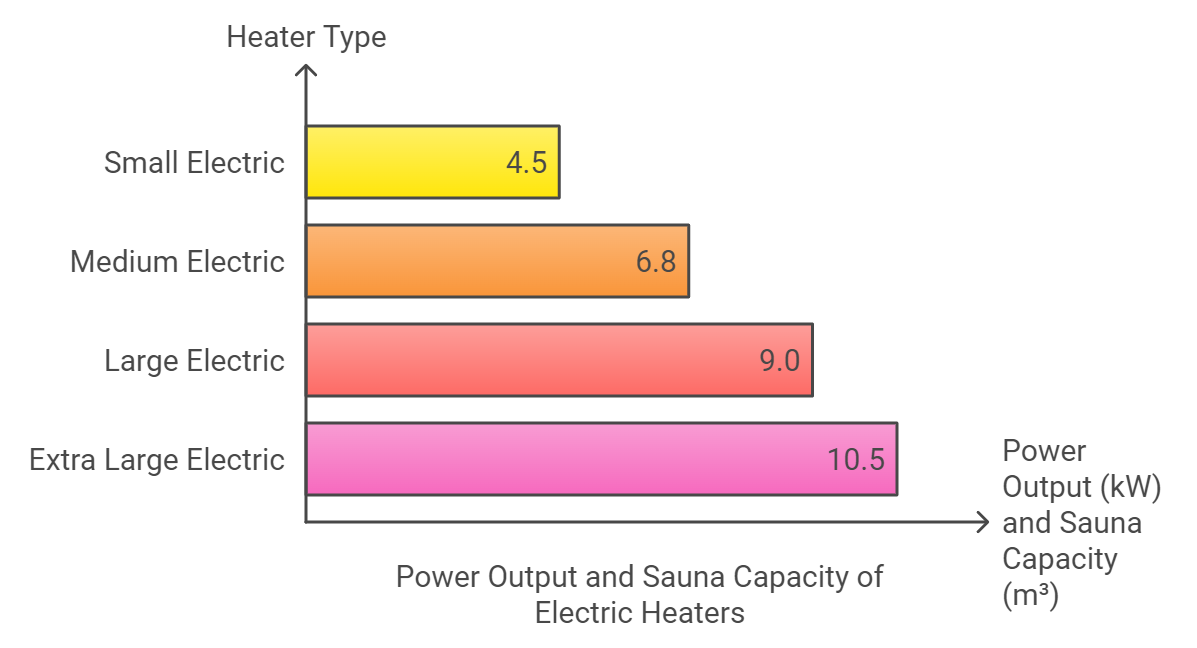
In Infrared heaters are energy-saving and suitable for smaller spaces. They warm your body directly, making for a softer sauna experience. Gas heaters are efficient but need a pro to install them safely.
When setting up your sauna heater, think about the electrical needs. Most saunas need a particular power line. For example, a 6.8kW heater needs about 31 amps, and a 9kW heater needs around 41 amps. Always get a pro electrician to make sure it’s installed right and safely.
Ventilation and Lighting Considerations
When you set up a home sauna or in-house sauna kit, it’s important to consider ventilation and lighting. These factors make your sauna experience better and safer and help create a cozy and relaxing space.
Proper Airflow Techniques
Good ventilation is essential for a comfortable home sauna. You should install vents near the floor and ceiling. This helps fresh air come in, and stale air goes out.
This keeps the sauna feeling nice and prevents too much humidity, ensuring you can enjoy your sauna without discomfort.
Lighting Options for Ambiance and Safety
Lighting in your in-house sauna kit sets the mood and keeps you safe. Pick lights that can handle high heat. Dimmable or color-changing LEDs are great for a calm vibe and enough light.
- Install moisture-resistant light fixtures
- Consider fiber optic lighting for a starry effect
- Use warm-toned bulbs for a cozy atmosphere
- Place lights strategically to avoid glare
Remember, good ventilation and lighting make your sauna better and last longer. Keeping these systems in check means your sauna will stay in a safe and enjoyable spot for many years.
Customizing Your Sauna Experience
Your home sauna kit is a blank canvas for personal touches. Adding unique accessories and features can make it a cozy retreat that feels right for you.
Adding Accessories and Features
Make your sauna more comfortable. With the right extras, your sauna can be made more comfortable. Soft seats and backrests help you relax better, and Turkish towels add a luxurious feel.
A water bucket and ladle let you make steam on hot rocks, boosting the sauna’s benefits. Thermometers and timers help control the temperature and time.
Incorporating Aromatherapy Elements
Aromatherapy can elevate your sauna time. Hang scented herbs or use essential oil diffusers to fill the air with calming smells. This can deepen your relaxation and offer health perks.
Music fans can enjoy a waterproof sound system for the perfect vibe. Custom sauna kits cost between $4,643 and $26,000. On average, they’re about $10,000, making these extras a good investment in your home and health.
| Accessory | Price Range | Benefits |
|---|---|---|
| CARIITTI Starry Sky Ceiling Lights | $1,284.00 | Creates a soothing atmosphere |
| IKI Original Wood Heater | $2,950.00 | Efficient heating, authentic feel |
| Thermo-Magnolia Wall Panels | $66.00 – $132.50 | Stylish, heat-resistant finish |
With these custom touches, your home sauna becomes a special place to unwind.
Conclusion
Building a home sauna with an in-home sauna kits is an exciting project. It can turn your living space into a personal wellness retreat. You can choose from traditional wood-burning saunas to modern infrared options. There’s a home sauna kits for every preference and space.
There are many benefits to choosing a portable unit, a pre-built sauna, or a DIY kit. Cedar is a top choice for sauna construction. It’s known for its natural resistance to decay and pleasant aroma.
Sauna sizes vary, fitting anywhere from one to six people. Larger units need more power and investment. Installation can take a few hours for pre-built models or several days for pre-cut kits.
Outdoor saunas add luxury to backyards and offer health benefits like improved cardiovascular health and stress relief. Regular maintenance is vital to keeping your sauna in good shape, regardless of type. By thinking about location, size, and heating method, you can make a sauna that boosts your health and home value for years.

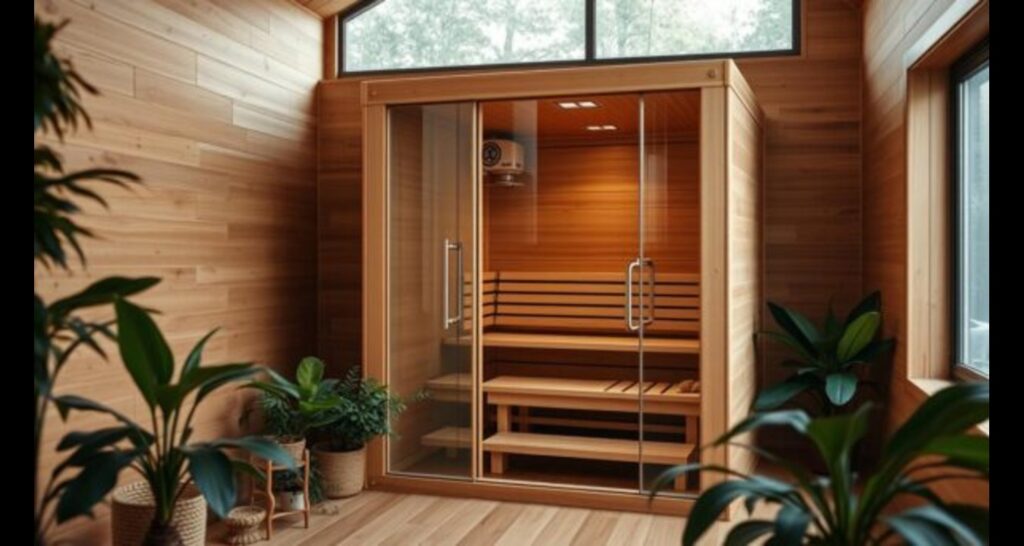

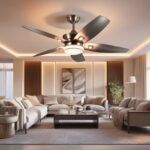


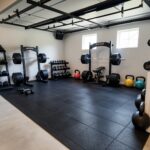
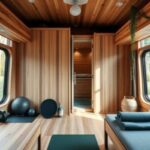
7 thoughts on “Home Sauna Kits :With this 10 benefits you will transform your Wellness”